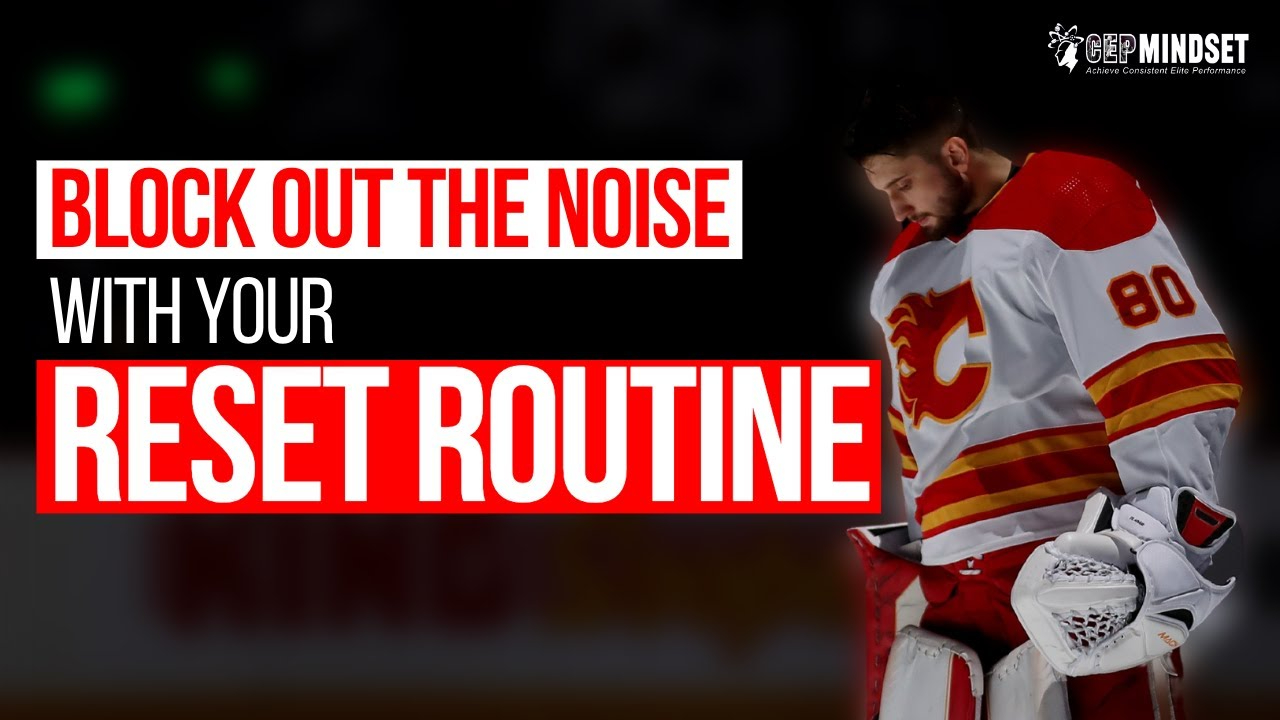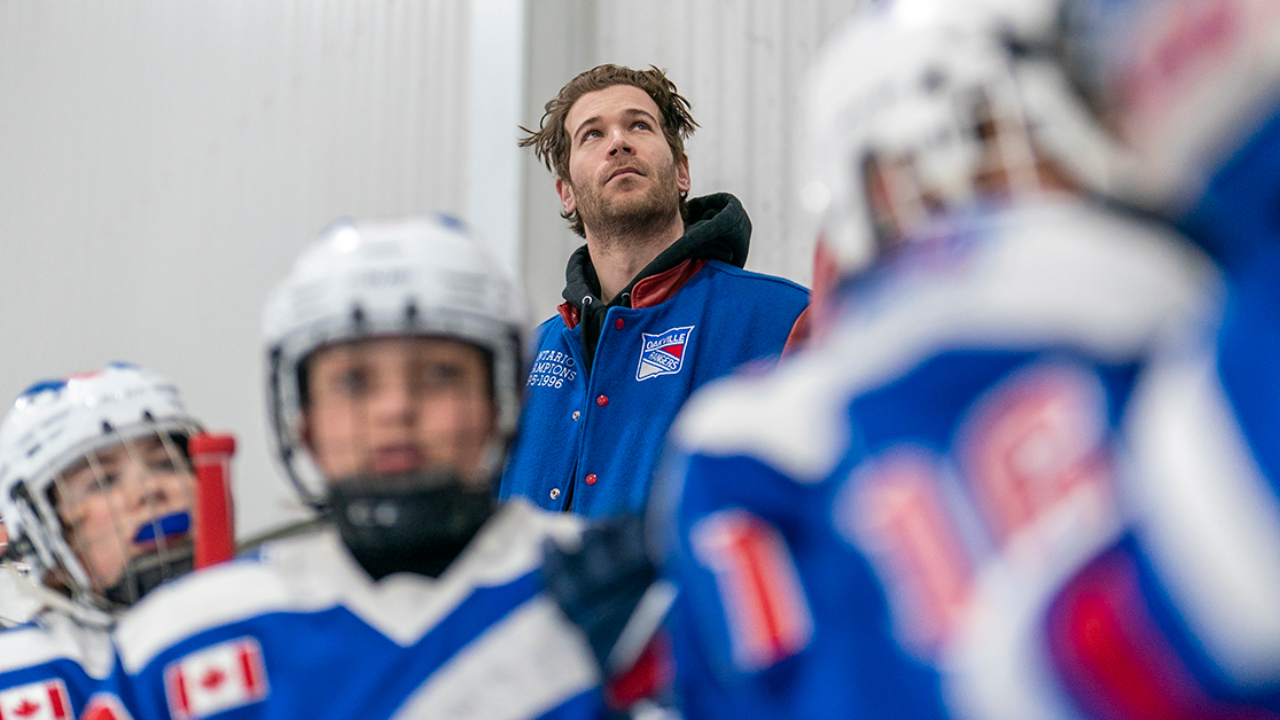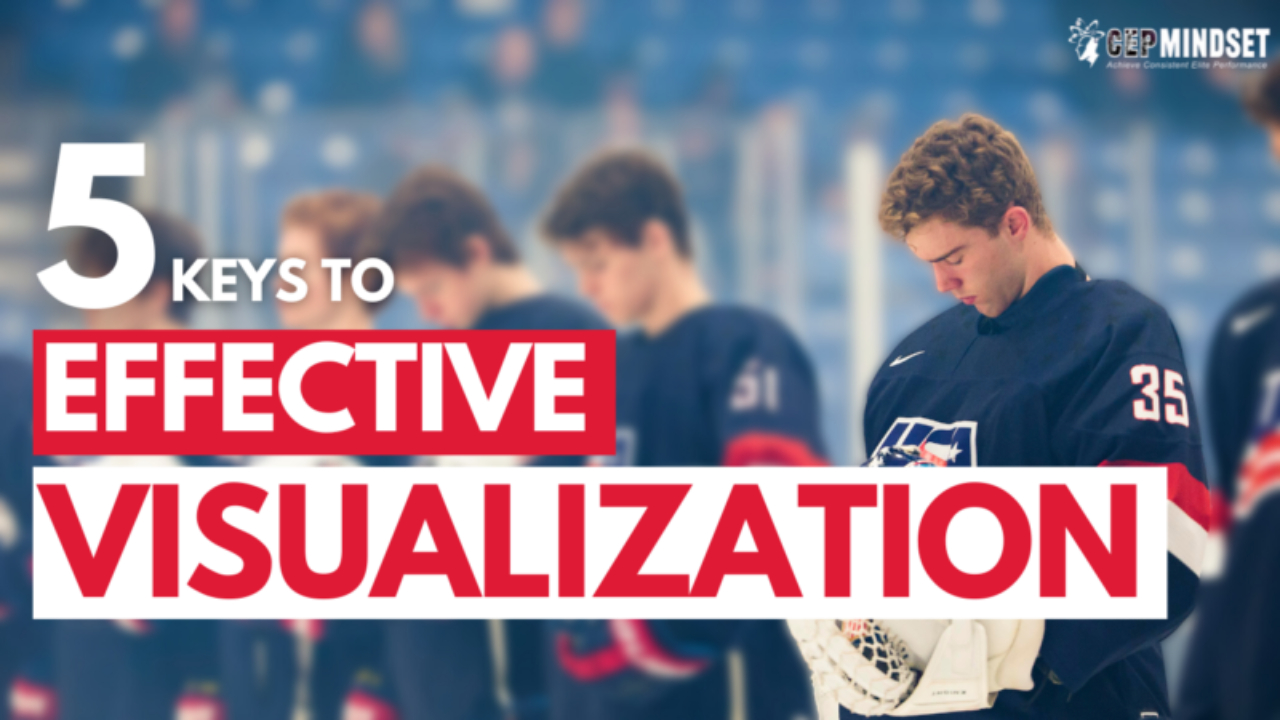
The ability to block out the ‘noise’ is key to having a clear mind and playing free.
But this is easier said than done – many athletes have trouble blocking out the ‘noise’ and end up:
- Overthinking
- Doubting their abilities
- Worrying about things out of their control
When you lack alignment within your thoughts, feelings, and actions, you end up losing the ability to play in the flow state.
The best strategy to clear and block out the noise is a Reset Routine.
The problem with blocking out the noise and clearing your mind is that it is not tangible. You can’t just hit a switch, throw away the distracting thoughts, or just forget about your worries. It doesn’t work that way.
However, the Reset Routine provides a repeatable and reliable solution by pulling together three crucial psychological concepts to feeling free and in the moment.
The magic is not in the routine itself, but in what the routine represents.
Here are the ABC’s to creating an effective and personalized Reset Routine:
STEP 1: Accept
This is the most important step, yet it’s the most misunderstood.
For example most athletes get caught in the ‘need to, have to, and shoulds’ of performance – this leaves them:
- Feeling the burden of expectations
- Distracted by the results that are not in their control
- Primed to be frustrated if they fall short of their expectations
The key to letting go of this noise is acceptance, but the problem is our society thinks acceptance is a weakness.
It’s misconstrued to be this fluffy lovey dovey concept best reserved for hippies.
However, if properly understood and effectively used it is one of the most powerful tools to getting centered, grounded, and becoming the hero of your own story.
That is why this step is the most important – without it your Reset Routine will not be effective or reliable.
The Pink Elephant and the Bubble
One of the analogies we like to use is the pink elephant and the bubble.
If I say “don’t think of a pink elephant.”
What do you think of?
A pink elephant…
This is not an effective strategy, yet that is exactly what most advice is for athletes:
- Don’t worry about it
- Forget about it
- Be positive
These might be the results we want but they do not tell us how to get those results.
Think of your focus and awareness as a bubble, and what we want is to have a clear bubble – where you are dialed into the process.
But the problem is pink elephants show up – aka distracting thoughts and feelings.
You can’t run away from them, they stay with you.
You can’t ignore them and look away, they are still there and you will feel them weighing on you.
You can’t fight them off, they will just get bigger and louder.
The solution is to go to them, to understand them, to embrace them, to accept them.
By doing this the pink elephant is not necessarily gone forever, but it will move outside your mental bubble, and your mind will become clear and free.
The pink elephant could come back, but with practice you can clear it faster and faster. Over time, you can also learn how to use the Reset Routine to block it from coming into the bubble altogether.
Accepting the Range of Results
My favourite example of acceptance is the Samurai.
They were great warriors that were well prepared for battle, but before they would leave they would say good-bye to their families as if they might not see them ever again.
They accepted the possibility of death.
By doing this they could fight free and fearlessly.
This acceptance does not mean they wanted to die, they most definitely wanted to live.
What it does mean is they accepted the reality of the situation despite how well they were prepared.
If they could not accept dying at war, then they shouldn’t be going to war – they could have just run away.
The good news, when sharing this with athletes, is that it is not about life or death – it’s about winning and losing a game or making a mistake vs succeeding.
I recently started working with a surgeon and we were reviewing this concept. The reality is not every surgery will be successful given the challenging nature of the surgeries they do.
So that was a different type of conversation for me, but the principles held true.
I don’t want the doctor to be indifferent to the life and death of his patients, but unfortunately if he is not willing to accept that his patients could die then he should reconsider what types of burdens he is willing to carry as a surgeon.
He said this was a light bulb moment for him. No one had ever said that to him before.
They spend years and years refining how to be a surgeon, but they are not trained and how to manage the emotions and fears associated with it.
As a result – he has been able to stay calmer in surgeries with a measurably lower heart rate – which will help him continue to be an even better surgeon.
Finding Your Pink Elephants
The hardest part of acceptance is knowing what to accept.
There are two common problems:
- The pink elephant is in your blind spot
You can feel it but have a hard time seeing it and understanding it – which therefore makes it hard to accept and clear. - A lack of perspective
When you are too zoomed in on the situation, you often have a hard time seeing the bigger picture. It’s like only seeing part of the pink elephant, but you can’t clear it unless you can see and understand the whole thing.
So the quickest solution to these two problems is to get help from an outsider. It’s a lot easier for someone else to see your blindspots and to look at your situation with a different perspective.
But you won’t always have the time or availability to do so.
Therefore you need to learn how to feel your way around to find the root of the noise. Then have the ability to zoom out and get perspective, so that you can be willing to accept it.
This is a skill that takes a lot of practice.
That is why the Reset Routine should not be a sometimes thing. It should become a regular part of how you mentally prepare. You use it every day so that you can continuously get better at clearing the noise.
Associate an Action
Everything we covered under step 1 so far has been about the concept of acceptance.
Acceptance is just a willingness problem and the above can help you be more willing to accept the noise.
But we want to turn this concept into a practice and habit – so pairing it with an action is one of the best ways to make it stick.
The most common example we share is a hockey player spraying water in the air and watching it fall.
It reminds them to accept and let go.
This obviously won’t work for every sport, so your job is to find something that works for you.
Sometimes athletes will actually use breathing (step 2) as the action for step 1.
STEP 2: Breathe
There are a vast amount of strategies on the importance of using your breath to help you get relaxed, calm and centered.
“An anxious mind cannot exist in a relaxed body.”
Dr. Edmund J. Bourne, Clinical Psychologist
Regardless of what strategy you use – breathing is a fundamental strategy for managing your physical and mental state.
Here are some of the top breathing & relaxation strategies that you could integrate into your Reset Routine:
-
- Deep Belly Breathing
Also known as diaphragmatic breathing – it is simply making sure you are taking slow, deep breaths, and controlled breaths. It is also important to count how long you inhale and exhale while belly breathing. This is probably the easier and most common choice. - Box Breathing
The breath should still be deep in the belly. The difference here is focusing on the cadence. A common example would be 4 second inhale – 4 second hold – 4 second exhale – 4 second hold. This completes one breath cycle and makes an even box when looking at the four parts of the breath. - Physiological Sigh
This strategy is strictly about helping you relax. First take an 80% inhale, a quick pause, then finish your full inhale before a nice long exhale. This pattern helps replicate an actual sigh and is another proven strategy for helping you get relaxed. - Progressive Muscle Relaxation
PMR works by contracting and relaxing one muscle at a time. The contractions last for 7 seconds each and are usually at about 50% intensity. By putting your attention on the contrast in the muscle tension it helps you further relax.
- Deep Belly Breathing
Pick the one that you feel is best for you – you can always come back and adjust.
It is important to be specific – for example: 3 deep belly breaths. This keeps your Reset Routine more tangible and transparent.
Disclaimer – it doesn’t matter if you do all the deep breathing in the world – if you still don’t accept and clear the root of the noise, then the benefits of breathing are limited. Breathing is not an alternative to acceptance, it is an addition.
STEP 3: Commit
Steps 1 and 2 will help you clear the noise and get centered, but the last piece of the puzzle is to direct your attention back to the task at hand.
If you don’t commit to the process you might end up letting another pink elephant get back into your bubble.
So in this step we often have the athlete close their eyes for a brief moment (if applicable) and imagine how they want to show up in the next play. It is not just what they want to do, but how they want to feel while they do it.
Setting a clear intention of how you want to move forward helps activate the best version of yourself.
This is also a great time to use a totem or anchor.
A totem comes from Todd Herman’s Alter Ego work – which is about creating a personalized narrative that clicks for you. The totem is then something tangible that you can touch, hold, or wear, and use to help associate that narrative. It’s a really powerful way to finish a Reset Routine.
Similarly, an anchor represents something you do or look at that anchors you back to the game and attacking the next play.
The combination of Acceptance and Commitment is well established as an effective one two punch – also known as Acceptance and Commitment Therapy (ACT). Although this approach originated in the clinical psychology setting – this can be a game changer for high performance.
At this point you should have a pretty good idea of how to build your own personalized Reset Routine to help you block out the noise and play free.
You know you are doing it effectively when you feel the alignment in your thoughts, feelings, and actions – you will stay composed under pressure, bounce back from mistakes, and able to get into the flow state.
Now remember the routine and the actions are not what make it work – the ability to accept is the key. So if your routine is not working well – the solution is often about doing a better job of finding your pink elephants, getting to the root of the noise, and fully embracing it.
Here is the summary of the 3 ABC’s of the Reset Routine:
- Accept: Embrace and deal with any distracting thoughts and feelings.
- Breathe: Get present and manage your internal arousal level.
- Commit: Set a clear intention, move forward, and activate your best self.
Make it a tangible routine that should only take about 10-15 seconds. You can make variations that are shorter or longer.
The bottom line is you need to personalize it and find what works for you.
I hope you found this helpful.
Please share this with anyone you think could benefit.














